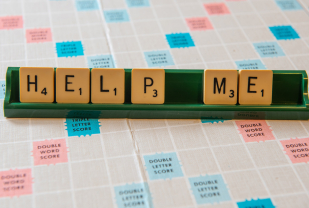So, have you completed the final section of your amazing paper? At this point, you may feel that it’s close to being perfect. It’s your work and your masterpiece.
You can, however, make your paper even better than it is now. If you wonder “how to edit my essay,” you’re on the right track. The first step is taking time to distance yourself from your paper. It’ll help you get a fresh eye on its occasional imperfections.
At the same time, it’s important not to get stuck with proofreading. Hemingway, who was an acknowledged champion in self-editing, confessed that he rewrote the ending to his Farewell to Arms thirty-nine times before he was fully satisfied with it. As a student, you probably have other things to do and don’t have that much time to polish every single paper. That’s why it’s important to adopt effective editing tactics. Here are 22 ways to get it done right:
Start from Bigger Issues
First, there’s no sense in correcting typos and spelling if you still need to focus on the logical structure and flow of your paper. So, before you edit your essay, take the following steps:
- Polish the logical structure. Make sure your paper has an introduction, conclusion, and several body paragraphs.
- Check the introduction and conclusion. Take a closer look at the opening and closing sections. Remember that the main goal of the introduction is to gain attention and present the topic. The goal of the conclusion is to briefly summarize what has already been said and make your project complete.
- Revisit your thesis statement. Check the last sentence in your introduction. It should be your thesis statement. Does it look like the logical center of your entire project? Does the rest of your paper support the claims you’ve made in your thesis statement? You can also compare your work to other essay examples on a similar topic to see how well it stacks up.
- Add transitions between sections if necessary.
Use Microsoft Word Shortcuts
If you don’t know where to start editing your essay, the text editor can be a great starting point.
- Consider Microsoft Word suggestions. Red underlining means problems with grammar and spelling, while green underlining indicates punctuation. Don’t rely on your editor too much, though, as sometimes it can be mistaken as well.
- Use search option. To make sure you use the same variant for some questionable word, use the combination Ctrl+F to search the document and replace wrong spelling if necessary.
- Eliminate unnecessary spacing. Use Ctrl+F to replace double spaces with a single space.
Exploit the Internet
- Copy your text into Google Translate, and listen to it. You’ll get a new perspective on your writing, and it’ll be easier to detect flaws in logic and inconsistencies in your text.
- Use Google to choose a better variant. Every time you wonder whether it is “a lecture on finance” or “a lecture about finance,” just Google “lecture on vs. lecture about.”
Use Free Online Software
- Use editing software to improve grammar:
- Grammarly
- Ginger
- WhiteSmoke
- AftertheDeadline
- Use editing software to check punctuation: PaperRater, LanguageTool.org.
- Use software to polish the style of your essay: StyleWriter, AutoCrit.
- Generate citations with online tools to save time and minimize format mistakes. Tools such as EasyBib and CiteFast can come in handy.
Get a Fresh Eye
- Print out your document and read your paper aloud.
- Read your paper backward.
- Read it one sentence or one paragraph at a time.
Manually Edit Your Essay
Along with using smart solutions to edit your essay, make it a rule to reread it and check it manually:
- Check punctuation
- Avoid run-on sentences.
Error: It was a sunny day we decided to go to the beach.
Revision: It was a sunny day, and we decided to go to the beach. - Avoid sentence fragments.
Error: Even though she was tired after a long working day and everything she has been through.
Revision: Even though he was tired after a long working day and everything he had been through, he turned on his favorite music and smiled. - Avoid faulty parallelism.
Error: He has either edited his essay himself or someone has edited it for him.
Revision: He has either edited his own paper or had someone else edit it. - Use the Oxford comma (or not). The Oxford comma is the final comma in a sequence, which is required by some style guides. Most teachers would prefer to see it in your writing. If you decide to use it, be sure to use it everywhere in your paper.
An error (or not): On my trip, I visited Berlin, Dresden and Prague.
Revision: On my trip, I visited Berlin, Dresden, and Prague. - Use a comma after introductory elements.
An error: Inside the room was well-planned and perfectly furnished.
Revision: Inside, the room was well planned and perfectly furnished.
- Avoid run-on sentences.
- Check grammar:
- Wrong word use.
Error: Mary has an allegory on citrus.
Revision: Mary is allergic to citrus. - Wrong or missing preposition.
Error: Where did they go to?
Revision: Where did they go? - Vague pronouns.
Error: Harry was always preoccupied with his smartphone. This annoyed his girlfriend.
Revision: Harry was always preoccupied with his smartphone. This habit annoyed his girlfriend. - Wrong or missing verb ending.
Error: She spend every summer at the seaside.
Revision: She spends every summer at the seaside. - Wrong shift in tense.
Error: She thought she will be a perfect match for this vacancy.
Revision: She thought she would be a perfect match for this vacancy.
- Wrong word use.
- Check often confused words:
- Eliminate the most common mistakes.
Take an Individual Approach
- Make a list of your most frequent errors.
- Pay special attention to your weak points in writing.



![26 Best Free Online Citation Generators [New 2024 Tools]](https://ivypanda.com/blog/wp-content/uploads/2016/02/hands-working-with-a-laptop-title-online-study-on-screen-309x208.jpg)

![Free Essay Help Online: 31 Reliable Websites [2024 Update]](https://ivypanda.com/blog/wp-content/uploads/2016/02/photo-cheerful-black-woman-holds-cellular-types-text-messages-uses-earphones-listens-music-dressed-ragged-overalls-models-outdoor-enjoys-playlist-modern-technologies-online-communication-309x208.jpg)


Great article, thanks!
Glad you liked it! Thank you for your feedback!
I have written an essay about Exploring Urban Character through an image map. English is my second language and I need some help with edit my essay. Can you help me? I can pay you to edit my essay, if necessary.
A bit surprised it seems to simple and yet useful.
Hi Marlie,
I’m happy to know that my article was useful for you! I hope to see you again on our blog.